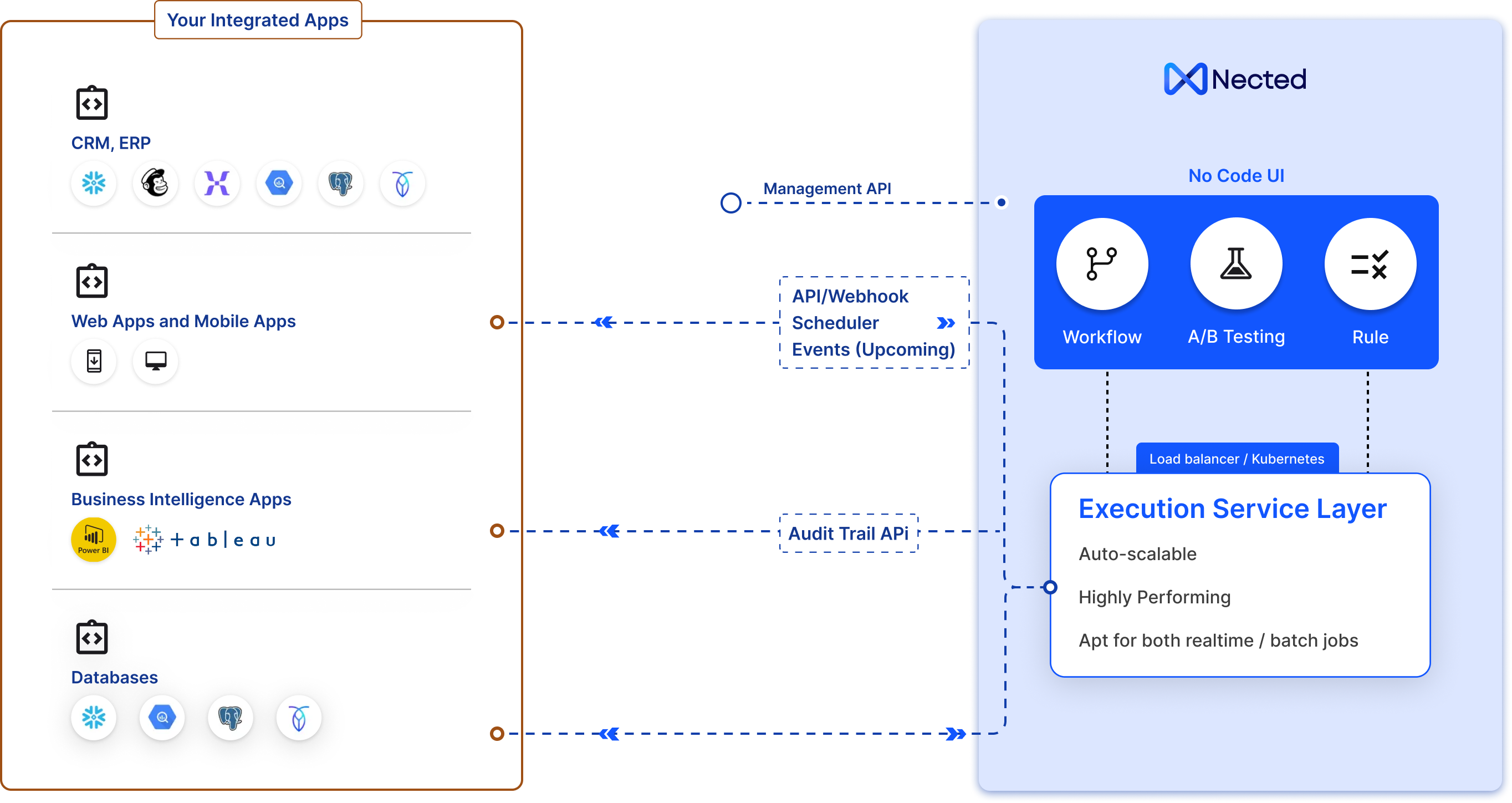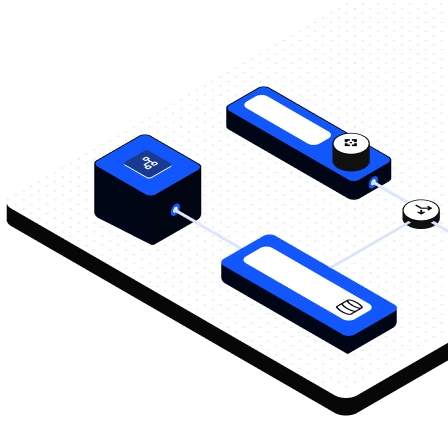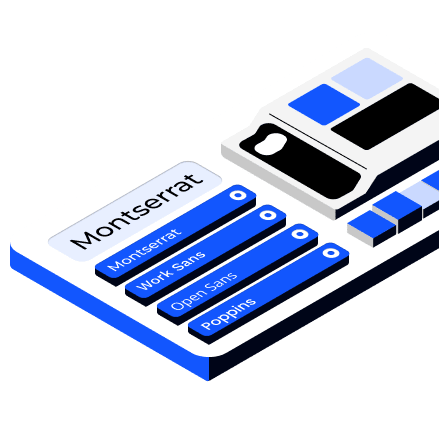
Paper forms and siloed spreadsheets force manual triage—creating multi-week backlogs and inconsistent citizen outcomes.

Critical identity, tax, and benefits data sit in separate legacy systems without real-time integration, causing eligibility errors and rework.
.webp)
Policy updates require engineering sprints—delaying critical rule changes and exposing agencies to compliance risk.
.webp)
Lack of transparent decision logs frustrates citizens and increases appeals, audit overhead, and litigation risk.

Systems fail or cost spike during peak events (e.g., tax season), leading to SLA breaches and political risk.

No isolated staging for rule testing and no instant rollback means policy fixes propagate slowly with high risk.

Empower policy teams to author, simulate, and publish rules with drag-and-drop—eliminate developer queues and reduce change lead time by up to 80%.

Deploy in cloud, hybrid, or on-prem environments with full audit trails, role-based controls, and data residency support to meet regulatory mandates.

Support >100k decisions/minute, real-time caching, and horizontal scaling for peak seasons like tax filing and benefit disbursement.

Built-in dashboards provide live SLA, appeal rates, and compliance KPIs—feed results back into policy updates with one-click versioning.


Seamlessly integrate with any system using simple API-based connectors. No need for complex configurations—connect databases, third-party services, and internal tools with just a few clicks.
.webp)
Leverage a powerful rule engine with multiple rule types, including Simple Rules, Decision Tables, Decision Trees, Rule Sets, and Rule Chains to handle complex logic effortlessly.
.webp)
Automate workflows with Action, Rule, Workflow, Code, Database, and REST API Nodes, while Loop, Delay, and Switch Block manage execution.

Efficiently oversee the entire rule and workflow lifecycle with built-in versioning, rollback capabilities, and staging environments, ensuring seamless transitions from testing to production without disruptions.
.webp)
Deploy Nected anywhere—choose multi-region cloud hosting for high availability or self-host on your infrastructure for complete control and compliance.

Gain full visibility into your decision rules and workflows with audit trails features, and real-time dashboards. Stay compliant and track every change with ease.

Deliver a fully white-labeled experience with embedded user functionality. Use Nected as your own branded decision engine.

Operate with confidence using enterprise-level security, role-based access control, and scalable infrastructure that ensures data integrity and performance even at scale.

Deploy intelligent AI Agents to automate document extraction, text classification, data enrichment, or any other domain-specific task. Build your own agents or plug in pre-trained ones directly into your workflows.

Integrate APIs, databases, and AI models like OpenAI or Vertex in minutes—no coding, just simple drag-and-drop setup.

Direct parity on rule automation, versioning, and audit trails; superiority in deployment speed and TCO. Nected provides the same no-code visual rule building as Pega and DecisionRules, plus pre-built connectors for national registries and faster sandbox-to-production pipelines—reducing project timelines by 40–60% versus traditional Pega-led projects and cutting configuration complexity versus DecisionRules.
Nected supports SOC 2 controls, role-based access, encryption at rest/in transit, audit logs, and full change history. Deploy on-prem or in a vetted government cloud to meet local data residency and sovereignty rules. Our architecture supports detailed audit chains and cryptographic integrity for compliance reviews.
Typical pilots go live in 2–4 weeks; production rollouts in 8–12 weeks for multi‑agency integrations. A single citizen service form with rule-driven routing can be built and sandbox-tested in 15 minutes using our templates and connectors.
Yes—Nected supports horizontal scaling to handle 100,000+ decisions/minute with predictable latency. Real-time caching, parallel evaluation, and stream processing ensure throughput comparable to top-tier rule platforms while maintaining auditability.
Nected logs rule inputs, decision paths, and outputs with human-readable descriptions. Versioned rule snapshots and rollback enable transparent adjudication and faster appeals handling—reducing appeals resolution time by up to 60% in our government pilots.
Nected includes out-of-the-box connectors for common government systems: ERP/Finance, EDRMS, national ID, GIS, tax systems, and payment gateways. Use REST, SOAP, JDBC, and secure SFTP connectors for legacy endpoints with no-code mapping.
Invocations refer to the number of times your workflows/rule is triggered via API, cron or other trigger. It will count the parent rule/workflow and can have as many rules, nodes within it. This metric is often used for billing purposes. Compared to other products, invocations as a billing metric can be more cost-effective and transparent, aligning closely with your actual usage and needs. It ensures you pay for the value you receive, rather than flat rates or less relevant metrics.
If you exceed, you'll be charged based on additional usage and will be added in your monthly charge. In case of payment failure after grace period, your plan will be reverted to free trial limiting your monthly execution and # of rules/flows as per free plan, however all your existing rules/workflow data would be kept intact.
Firstly, we do not have a vendor lock-in, so you can cancel anytime you want. However, if you decide to cancel once your subscription for a given period has started then you would be able to cancel at the time of the next billing cycle only.
Yes, you can typically upgrade your Nected plan at any point during your billing cycle. The upgrade process is usually straightforward, often involving just a few clicks in your account settings. Upgrading mid-cycle may involve prorated charges for the higher-tier service.
The best plan depends on your specific needs, such as the expected number of invocations, the complexity of your workflows, and the level of support you require. It’s a good idea to start with a basic plan and upgrade as your needs evolve, especially if you're new to Nected. Moreover, you can also write to us at assist@nected.ai and we will help you figure out the best plan for your brand.
Yes, Nected usually offers assistance in setting up and creating a Proof of Concept (POC), especially under certain plans. This assistance can include access to customer support, documentation, and possibly dedicated account management.
The Startup and Growth plans typically provide basic to enhanced support, including access to customer service through email or chat, a knowledge base, and possibly community forums. Response times and the extent of personalized assistance may vary between these plans.
The on-premise plan generally offers the most comprehensive support, including dedicated account managers, 24/7 support, and tailored assistance for deployment, maintenance, and troubleshooting. This plan is best suited for businesses with extensive, mission-critical use of Nected.